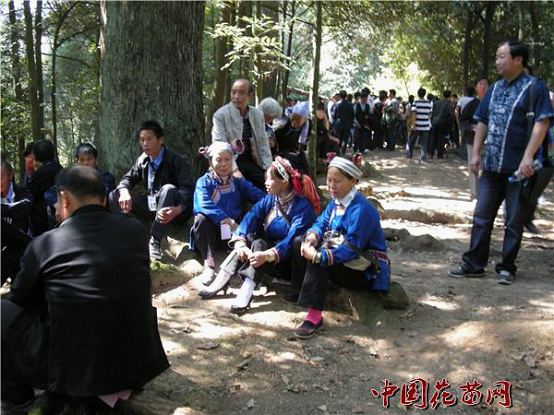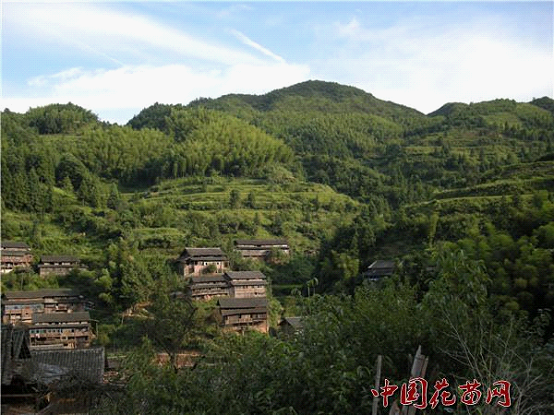
Dijiao Village is located to the southwest of the county town. The villagers are mainly from four families surnamed Lu, Liang, Long and Pan. They migrated from Jingcheng and Sanqiu during the reigns of Emperors Qianlong and Jiaqing of the Qing Dynasty (1616-1911). The village now has 120 families of 570 people.
Surrounded by mountains, the village is located at the juncture of three counties. It borders Boyang Town of Tongdao County (which is close to Sanjiang County of Guangxi Zhuang Autonomous Region) to the south, and Shengde Village of Liping County of Guizhou Province to the west, Suiyi Mountain to the east and Baishanjie to the north.
The village is inhabited by the Miao people, who live in stilted buildings and enjoy their traditional ethnic life with little influence from the outside world. Their connection to the outside world is a hilly flagstone road, which is over 10 kilometers long. As the years pass, the ancient buildings such as bridges, temples and wells are still remained in the village. The trees surrounding the village are over 500 years old.
The village has changed its name several times. It started as Dizhao Village, which means “bring fortune” in Chinese, but it was plagued by fire for years. It then became “Dijiao (地焦)” in order to avoid fire accidents, and finally by its present name after the founding of the new China for the convenience of writing.
Due to the unique geographical location and good ecological environment, people living in the village enjoy longevity.
Eight sceneries of Dijiao Village:

Jielong Bridge

Feishan (mountain god) Shrine

The 500-year-old Gleditsia sinensis (Chinese honey locust) near the village

The Houlong Slope

Village well

Daniang Rock by the village path

The flagstone road in the village

Dapojie Mountain
(Translated by Yang Hong)
